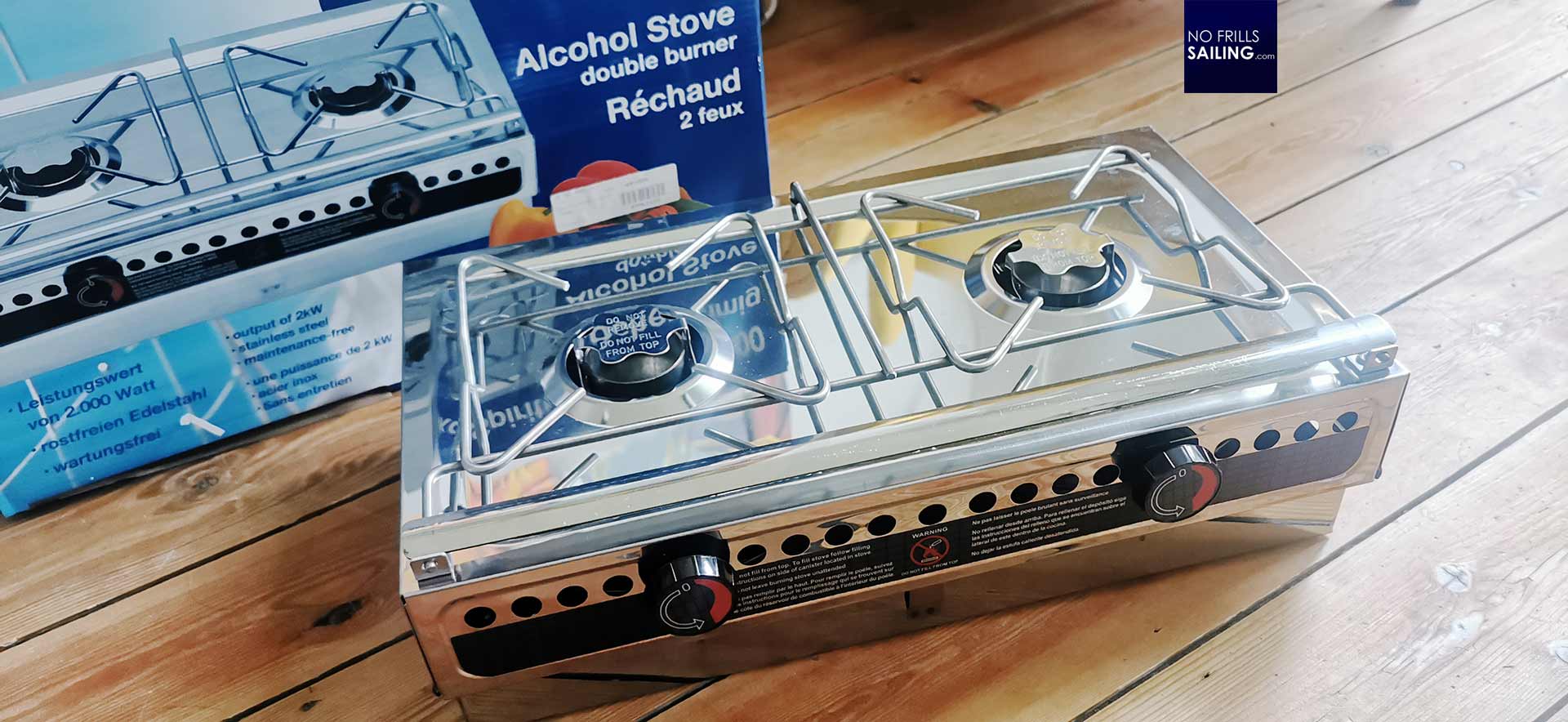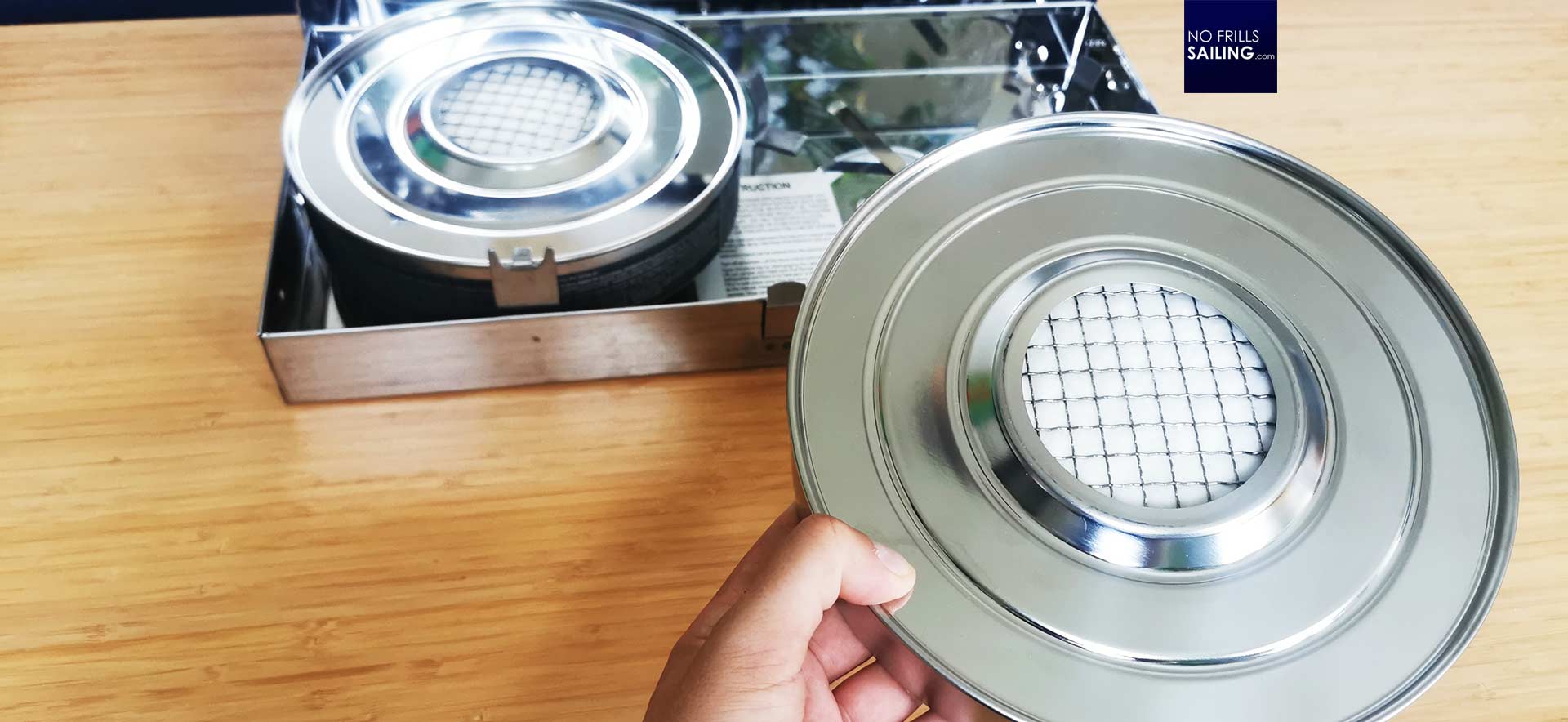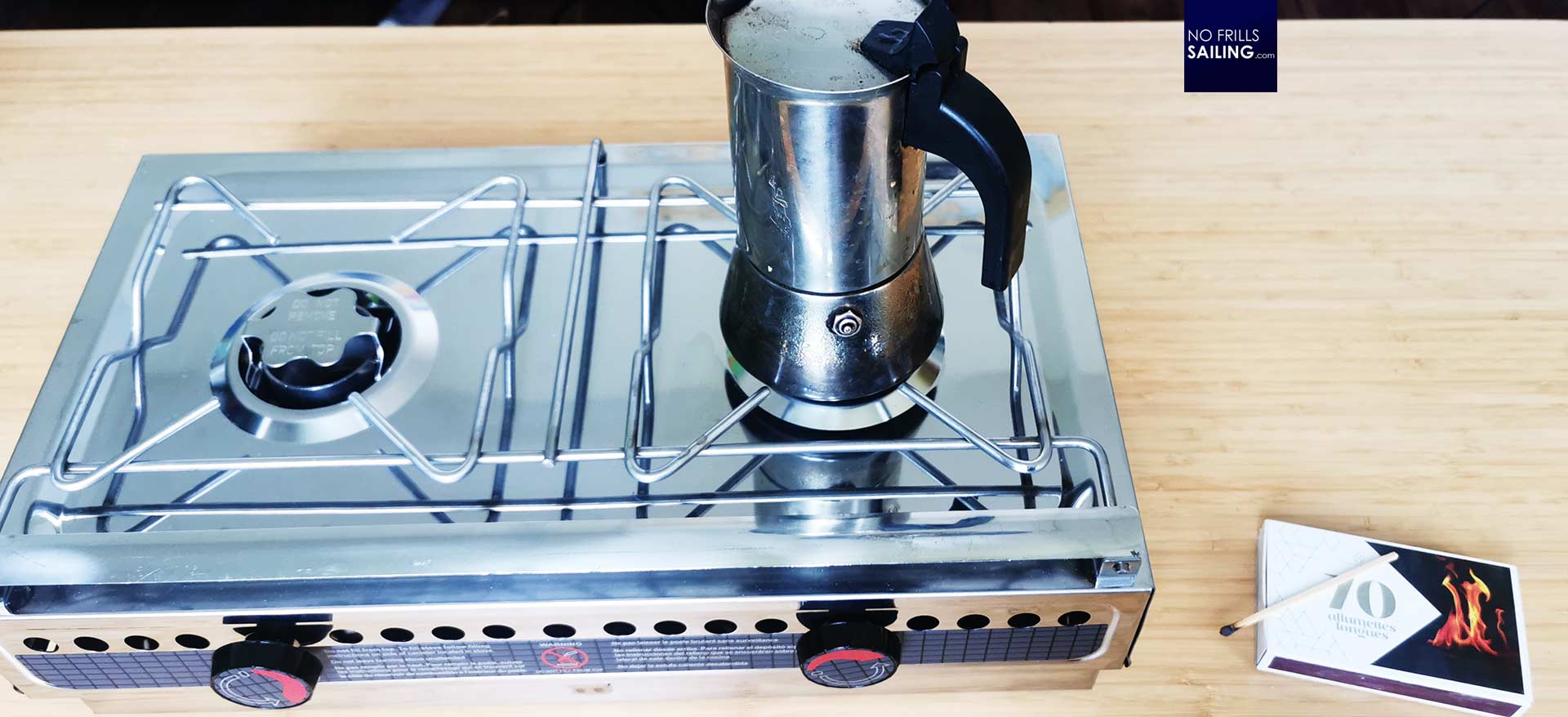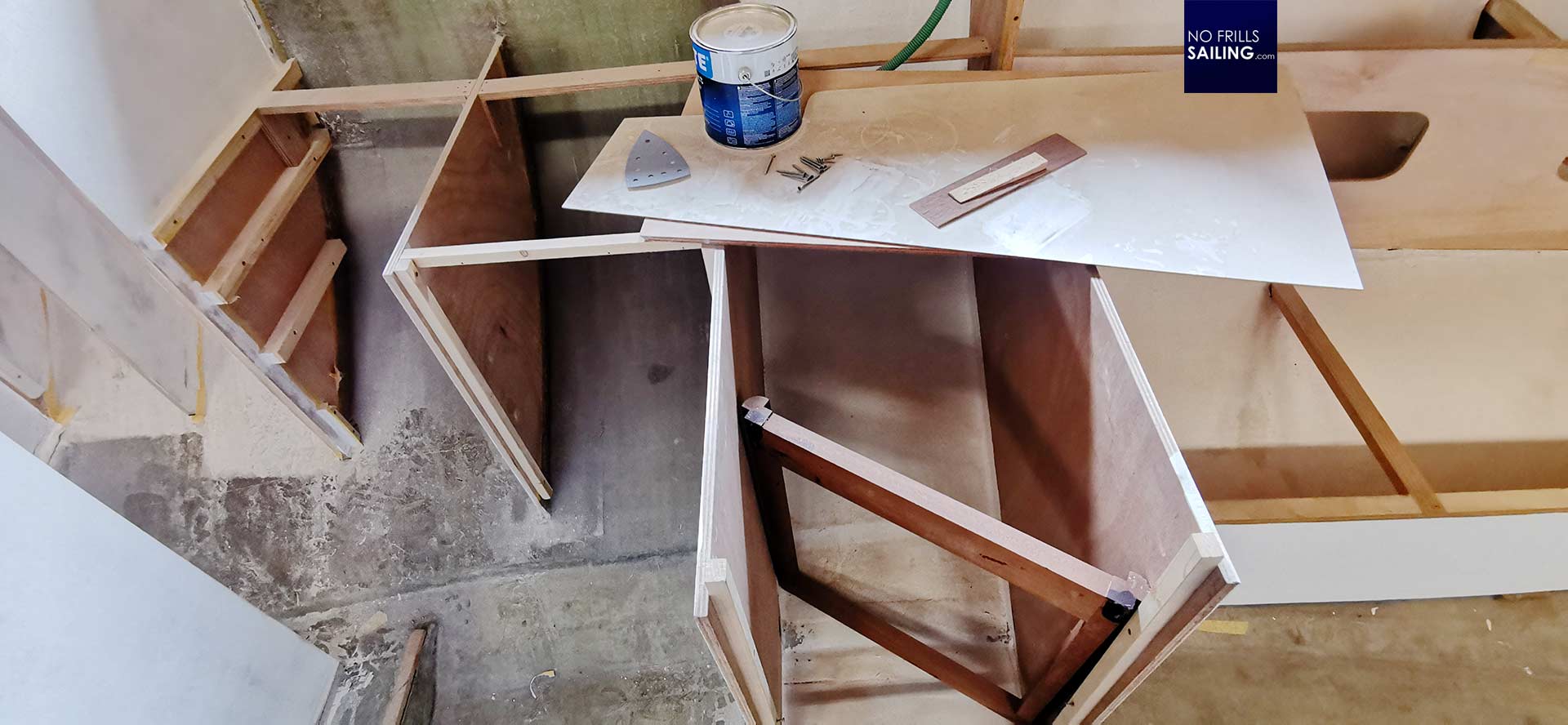Yesterday the friendly delivery guy from DHL rang my door bell and put a nice new package in front of my flat´s door. The new stove for my Omega 42 had arrived. As the guys in the shipyard are starting to work on the boat´s galley, I am the one to deliver the essential parts, of which the stove is, I´d say, the most essential one. Before ordering this part, I had a pretty intense decision-making process to go through and wanted to share these thoughts with you, dearest readers.

Cooking on board may or may not be an important part of boating and boat life for you. Be it the simple joy of a hot coffee or tea during a freezing night watch, a fast snack when hunger is grinding your stomach or the all-out boat dinner with family and dear friends, what your ship needs is a good stove to heat up water, make the ingredients boil in a pot or fry in a pan. Most boats still use liquefied gas burners – for me it was clear from day one (LINK) that I wouldn´t want to have a gas-system installed on ALPHA.
Alternatives to a liquid gas stove
So, why not use a gas burner? It´s fast, convenient, cheap technology and proven technology. Refills or new filled up gas bottles can be bought literally everywhere in the world. Gas fired stoves are very powerful: The Dometic Sunlight contemporary gas stove has 2.2 kWatts of power output, which is quite something. So, why skip this reliable technology? It´s the hustle with the whole gas system. If you want to have it save, the European standard norm is – from my point of view – not enough to have a safe system installed. It needs to be upgrades to German gas norm G 608, which is quite intricate and costly to install. Furthermore, to retain the perating permit, the system must be inspected and certified every two years.

Another alternative would be an all-electric kitchen on board, which is a n option with Beneteau yachts that is becoming increasingly popular in new boat orders. My last sailing trip aboard the Oceanis Yacht 60 taught me some interesting insights into using an all-electric boat galley. The problem: An electric stove needs 230 Volts and thus cannot be operated when disconnected from shore power – unless your boat is equipped with a generator, as power requirements of an electric stove are well beyond inverter capabilities. So, in turn, we just had to run the Diesel generator in order to prepare a cup of boiling water for a “quick” coffee … seems a bit exaggerated? I think so!

I love the Jetboil-technology: Fast, cheap and really convenient. Best for quickly heating up water or a small one pot dish. But, as I used this item heavily on GEKKO in the past, preparing a real meal, like cooking Spaghetti or even a dish that consists of two major ingredients is impossible. On the other hand, I´ve spoken to several keen sailors who told me to investigate a bit into alcohol stoves – and I found this might be just the simple solution and best compromise between power, price and convenience for my new boat. Well then, let´s check out my new stove in reality!
The mother of all alcohol stoves: Origo 3000
Methylated spirits stoves are a thing widely in use in the early era of popular boating. For some reason these stoves kind of disappeared from being utilized by the shipyards, I guess that´s because of the “troublesome” properties of the burning fuel, which is methylated alcohol. This liquid is highly volatile and flammable – leaking bottles and the slightest spark can quickly lead to fire and also deflagrative explosions. Not so good. As boats were intended for average Joe´s daily use, liquefied gas seemed the safer option. Anyway, in that “spirits”-era the Origo 3000 was the most commonly used alcohol stove. Proven, rugged, easy and cheap.

The original is no longer available and a few years ago market leading brand Dometic ceased production of this stove type, but (I guess a Chinese manufacturer) some company acquired the patents and still produces the “Spirits stove 3000”, which in essence is the traditional good old Origo 3000. It is a standard 2-flame burner with a 2.000 Watts power output – so that´s just slightly less power than its gas-fired counterpart. Construction and parts are very simple – which makes utilizing, refilling and cleaning a no brainer.

The stove is pretty simple. When folding up the upper part, two cartridges will be visible. These are the tanks where the methylated alcohol is filled in. When put down again, the top part has two mechanic gauges which open and close the fire and also regulate the strength of the flame from minimal to maximum. The stove fire then is ignited by a long match or lighter.
Burning fuel Methylated Alcohol: Will it do?
First of all, there is the urban myth that the fuel stinks. So I set up the oven in my living room to fully test all properties, with an emphasis on the so-called downsides of spirit as fuel. Yes, methylated alcohol has a very distinctive, pungent odor when the bottle is opened and your nose is right over it. Also, when filling up the spirits tank the smell is kind of overwhelming. This is by the way the reason why this is done only in well vented rooms with fresh air. After filling up one of the tanks, I put it together, closed off the oven valve and let the stove stand in my living room over night for a full day – windows closed.

Guess what? It does not emit any smell at all! I´d say that the story of the “alcoholic stinking boat” is either a persistent myth or on boats where it does smell those stoves aren´t maintained properly. So, green light on the smell-front, let´s go ahead! Safety is another buzzword by people who wrinkle up their noses over the alcoholic stove. Bootle may explode, boats may catch fire and sink, people may get sick by the constant alcoholic fumes. Well …

Of course the highly volatile fuel is a big fire hazard. The fumes will ignite with the slightest spark. That is true. But it is also true that liquefied gas piping can leak, bottles may abruptly discharge and many, many boats catch fire due to kitchen fires. It is a risk, any open fire and any combustible fuel indeed is a risk. For me, fire protection and being ready to react efficiently and fast is a must – having a fire blanket and extinguisher at hand in the galley is part of my boat´s safety concept. As for the alcoholic stove in particular, it´s predominantly the refueling that poses the biggest rist.

Spilled spirits must be wiped clean immediately. Refueling can only take place when the stove has cooled down and of course the storage of the fuel bottles has to be done in a safe manner. That means, that I will provide a custom-made rack that can take on up to 4 or 6 bottles of alcoholic fuel. This rack will be stored in the outside locker at the end of the boat´s hull so that under no circumstances fumes or even liquid can enter the living area of the yacht. I assess the safety of such an oven is not much less than that of a gas-fueled installation.
2.000 Watts power: Fast cooking!
Now, let´s check the cocking power in reality. I often read in forums that methylic alcohol as fuel has a less high energy density. Hence it needs more fuel or takes longer time to achieve the same outcome compared to electric or gas fired stoves. This is what I wanted to test under real life conditions – in my home flat. This test was the morning coffee. I am coffee-addicted, not only at home, but also when underway. A start into a new watch – no matter which time of the day or night – is always much, much better with a freshly brewed coffee, of course made my the all-Italian stainless steel Bialetti!

At home, on my ordinary Ceran electric stove, the mid-sized coffee maker will take just under three minutes to bring the water to boil and brew a tasty coffee. Making the coffee on the Origo 3000 (replica) alcoholic stove took 3.55 respectively 4.10 minutes – not all-too much longer, I shall say! My next experiment was to bring one liter of tap water from tap temperature to 100 degrees Celsius boiling temperature. This, again, takes just over 10 minutes on my home electric stove. With the methylic alcohol fired stove, the same pot with 1 fresh cold liter of water tool 7.45 minutes to start simmering, hefty simmering after 12 minutes, wild boiling after 14.30 minutes. I would say, this is absolutely reasonable. If not awesome!

In the end, this stove produces 2 kilowatts of power. This is almost the output of the corresponding gas stove from Dometic. What I particularly like about the spirits stove is the fact that it doesn´t come with an oven. Don´t get me wrong: I love cooking and at home my Shepherd´s Pie or any tasty recipe out of my traditional clay casserole are top notch. But not on a boat. I just don´t need an oven on my yacht. Period. When in harbor, morning rolls will always be fresh at the local bakery – underway I´d never prepare a gratin. In this, I am sure, I´ve found my best compromise in onboard cooking equipment. By the way: This stove has a 300 Euros price tag. Any questions?
A good choice for my new boat
And so I bring my newly acquired Origo 3000 (thank good there is a company still making this wonderfully simply piece of equipment!) to the shipyard because the guys are about to begin working on the ship´s galley. Still, it needs some imagination and a good piece of positive thinking to imagine that one day I´d prepare a Bialetti full of fresh coffee on these raw wooden racks, but still, it will be wonderful.

For now I am happy to cross off this item from my list, having made the decision now makes me free for new items to look at. Regarding the kitchen – you will get to see it in the next article about the Omega 42 building progress – the worktops and tabletops will be made with nicely prefabricated Bamboo – the very same material I use in my home flat, adding very interesting haptics and visually “exotic” touch to the boat whilst saving massively on weight compared to Corian or massive Oak tree. Stay tuned.
You might as well find these related articles interesting:
Galley ballet: Cooking offshore
All onboard recipes: Yummie!
